Availability
Book Now5 Day-Trips near Forks, WA
Whether you have only a few hours or several days, this guide offers a host of choices as you explore the Northwest corner of the Pacific Northwest.
This 2,000 square mile region is bordered on the north and west by over 100 miles of saltwater shores and to the south and east by alpine meadows and rain forest valleys. Over 200 miles of wild rivers furrow the region with vibrant runs of native salmon and steelhead. Year-round temperatures range from the mid-40s to upper 60s, snowfalls are infrequent as are temperatures over 80 degrees.
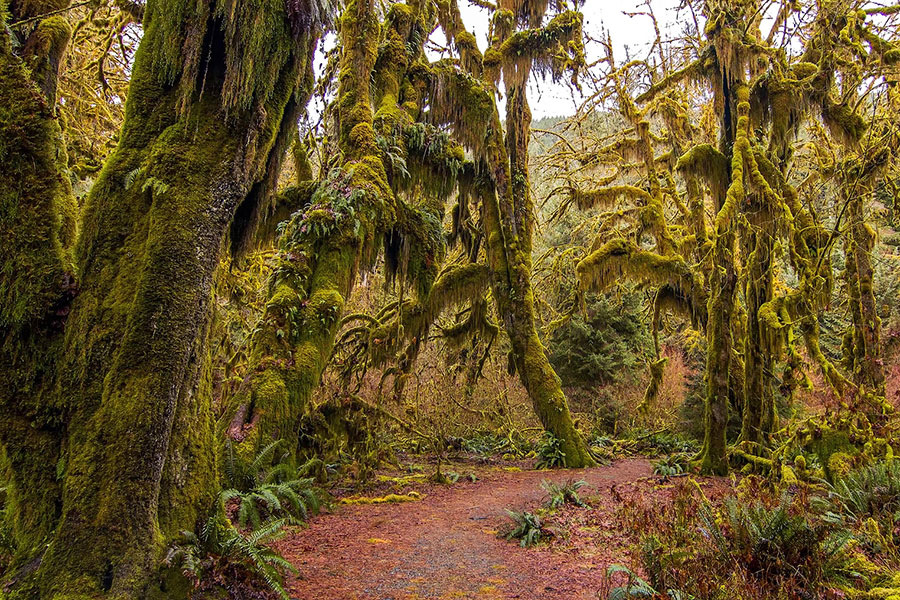
Day 1: Hoh Rain Forest and Kalaloch Beaches
Among the only protected temperate rain forests in the Northern Hemisphere, the Hoh Rain Forest is a not-to-be-missed attraction on the West Side of the Olympic Peninsula.
Moisture-laden air from the Pacific brings an average of 140 inches of annual rainfall to the Hoh Valley, (record of 190 inches) in addition to condensed mist that contributes another 30 inches. Nineteen miles inland from Hwy 101 you’ll find the Hoh Rain Forest Visitor Center. Three loop trails near the Visitor Center are easy to stroll and give a great sampling of the area: The Hall of Mosses Trail is 3/4 mile and shows the moss-draped maples, magically green in the spring, spectacular with color in the fall and a treat any time of year; the 1 1/4 mile Spruce Nature Trail meanders through the late-secessional (younger) forests of red alder and cottonwood, showing the landscape carved over thousands of years by this glacier-fed river; and a paved 1/4 mile nature path suitable for a wheelchair or stroller.
The Hoh Visitor Center is also a starting point for longer and more challenging hikes to alpine meadows and glacier fields. Trekking with llamas is one way to explore the interior of the Park, when llamas pack your gear while you just pack yourself! River floats trips are available in summer on the Hoh River, and local fishing guides offer great sporting and photography trips year-round.**
Picturesque Ruby Beach with a meandering creek, dramatic sea stacks, and drift logs is named for its sometimes garnet-colored sand. A gold mining operation was located here in the early 1900s. The Rain Forest Country Adventures Map shows the beaches, attractions and services in the Hoh Rain Forest and Kalaloch areas, including the specific route to the worlds largest western red cedar off Hwy 101.**
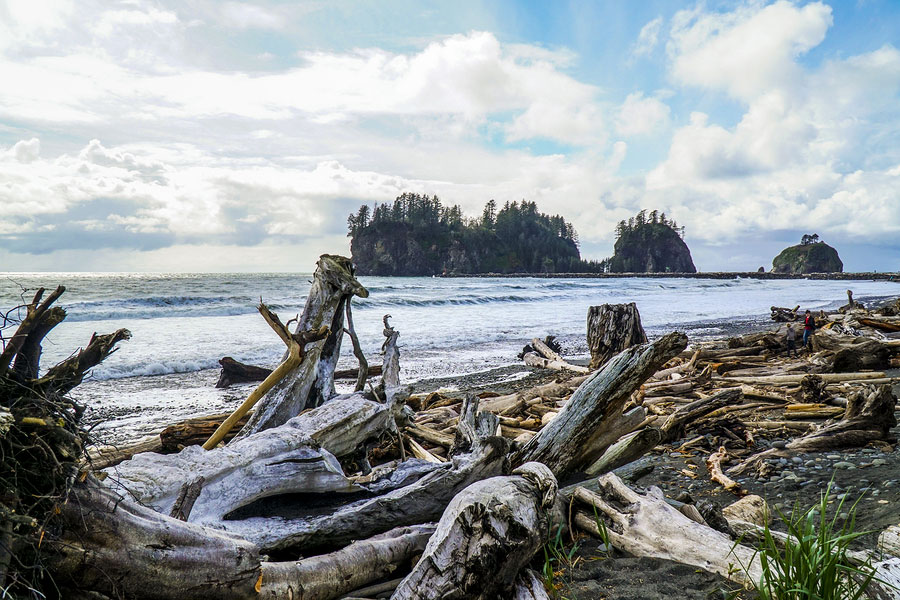
Day 2: Around Forks and La Push
Forks is situated on a broad prairie 14 miles from the ocean. About 5,000 folks live in the area, and you’ll find many restaurants, lodgings, shops and services in this friendly, rural community. At the north end of Forks, look for Tillicum Park featuring public tennis courts, covered picnic area and children's playground. Near the south edge of town you’ll find the Visitor Information Center, the Forks Timber Museum and the Forks Loggers Memorial with its 12-foot tall carved wood logger. The complex offers gardens and forest paths that link to the University of Washington research facility.
The Forks Timber Museum features an authentic fire lookout tower, a 9-foot cook stove from a logging camp and exhibits of pioneer and regional history. Open seasonally or by appointment (360) 374-9663. Free Logging and Mill Tours depart from the Forks Visitor Center on Wednesday each week in 2010 from May through September.
Step aboard a real logging crew van for a 3-hour tour of a mill, and logging, thinning & managed forestry sites narrated by volunteer guides. Reservations are advised as seating is limited. Call (360) 374-2531 to reserve space.
West of Forks, visit Rialto Beach on the north side of the Quillayute River. This drive-to beach is a beautiful spot to enjoy the surf and watch shorebirds, eagles and seals. The 1 1/4 mile trek north to “Hole-in-the-Wall” begins here.
On the south side of the river is the Quileute Indian village of LaPush and First Beach, a mile-long crescent known for surfing-size waves and great whale watching, especially from February through April. Kayakers, surfers and seals often add to the view. This hospitable community offers a marina from which fishing charters operate in season, along with restaurant and lodging facilities. Second Beach, just east of LaPush, is popular with photographers and is reached by way of a .7 mile forested trail that leads to a 2-mile long sandy stretch of beach – watch for the eagle nest above the tree line.
Third Beach, is a mostly-level 1.5-mile trail through natural second growth forest, a result of winds up to 170 mph in January 1921.
The “21 Blow” leveled nearly 8 billion board feet of timber, enough to construct 600,000 3-bedroom homes. In the fall, mushrooms flourish under the forest canopy on these trails. The Sol Duc Salmon Hatchery, 13 miles north of Forks, has interpretive displays, river access, and picnic areas. In the fall, adult fish can be seen in the trap located past the water-cooling tower and large pond toward the river.
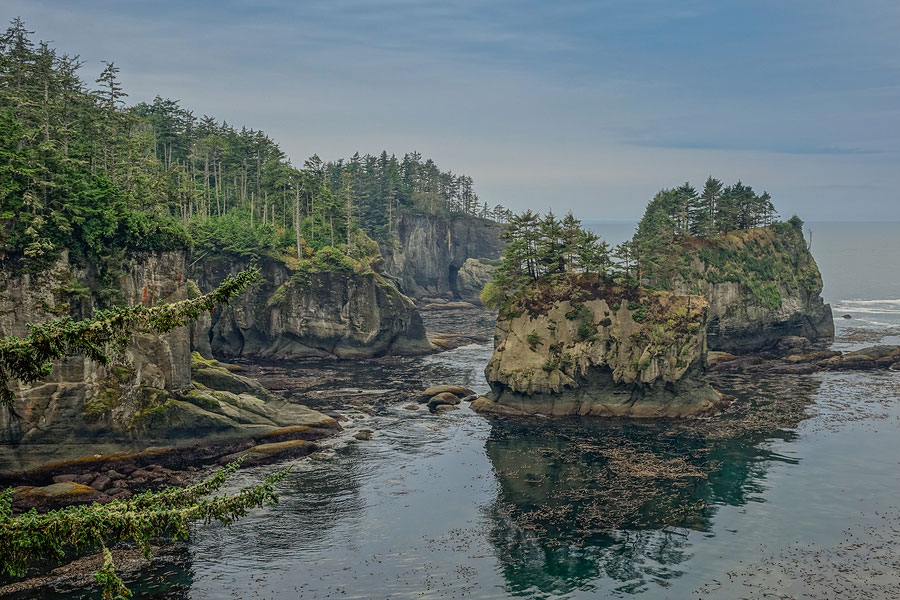
Day 3: Explore the Northwest Coast
Head to the most Northwestern tip of the continental US, exploring Cape Flattery, perhaps take a whale watching tour, walk along Hobuck Beach and visit the internationally-known Makah Museum.
Along Hwy 112 are the communities of Clallam Bay, Sekiu and Neah Bay and spectacular views of the Strait of Juan de Fuca and Vancouver Island in British Columbia, Canada. Birders will delight in the variety of sea and migratory foul found in this region, a list of sites and species is available by request or on-line.**
Some of the best tide pools in Washington can be found near Clallam Bay at Slip Point. Access is from the county day-use park right in town. Once on the beach, head to the right toward the point. Check the tides and allow plenty of time to be safe.
Picturesque Sekiu has several boat marinas – a fun stroll to look at the boats and perhaps catch a glimpse of halibut, lingcod or red snapper fresh from the Strait. Marina at Sekiu Traditional Makah Attire Continuing toward Neah Bay along Hwy 112, watch for the occasional gray whales that feed in the shallow reefs along the Strait of Juan de Fuca. Keep an eye out, too, for bald eagles that can be seen along this dramatic stretch of highway, particularly in late winter. Whale watching, scuba and fishing charters as well as kayak rentals and guided coastal tours are available seasonally at Sekiu and Neah Bay.**
Makah Indian artifacts more than 500 years old are preserved and displayed at the Makah Museum in Neah Bay (360) 645-2711 (Open daily). Neah Bay is also a major stop on the Northwest Flyway for migratory birds. Beyond the village of Neah Bay, enjoy a spectacular .7-mile walk to Cape Flattery, the most northwestern point in the contiguous 48 states! The boardwalk trail leads through the forest to breathtaking vistas with four observation decks where one can see Tatoosh and Vancover Islands, sea life and ship traffic. Turning south over the Waatch River near the Makah Tribal Center will lead to the scenic crescent of Hobuck Beach, which is open to the public year-round for day-use.
Continue to the new northern entrance to Olympic National Park and Shi Shi Beach where the Point of the Arches rock formations can be found.**
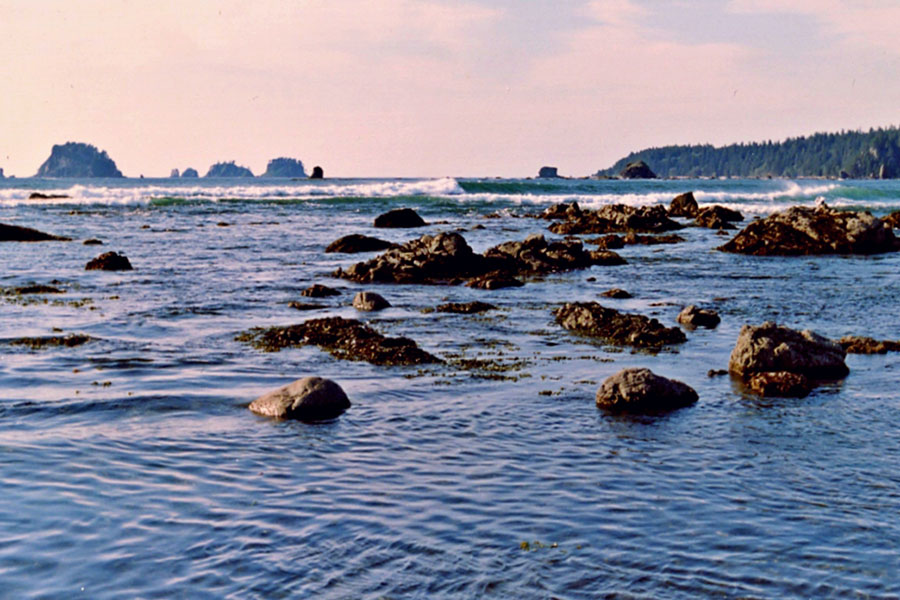
Day 4: Ozette Wilderness Hike
Travelers will find the northwest entrance to Olympic National Parks 57 miles of coastal wilderness at Lake Ozette.* (Take Hwy 113 & 112 from Hwy 101 past Clallam Bay, turning southwest onto the Hoko-Ozette Road, follow 21 miles to the Ozette Ranger Station.) Three miles of plank-and-stair trail lead the hiker to Cape Alava, with rocky shores and reefs to explore at low tide. Cape Alava is near the site of an ancient Makah village partially buried in a mudslide over 500 years ago. Artifacts recovered from this site can be viewed at the Makah Museum in Neah Bay. The site is now closed and is marked by a memorial kiosk. Look for dozens of Indian petroglyphs at Wedding Rocks, midway between Cape Alava and Sand Point.
Sand Point, the southern tip of this 9-mile triangular trail, offers agate hunting and is home to a large sea otter population. A turn inland will lead you a level 2.8 miles back to Lake Ozette via another planked trail. The cedar plank walkway can be slick; soft-soled athletic shoes are often preferred over vibram boots. Be sure to check a tide table to time your beach walk with an outgoing tide, and carry the 10 hiking essentials – and a camera as seals, deer, eagles and perhaps osprey, otters and whales may be there, rain or shine!
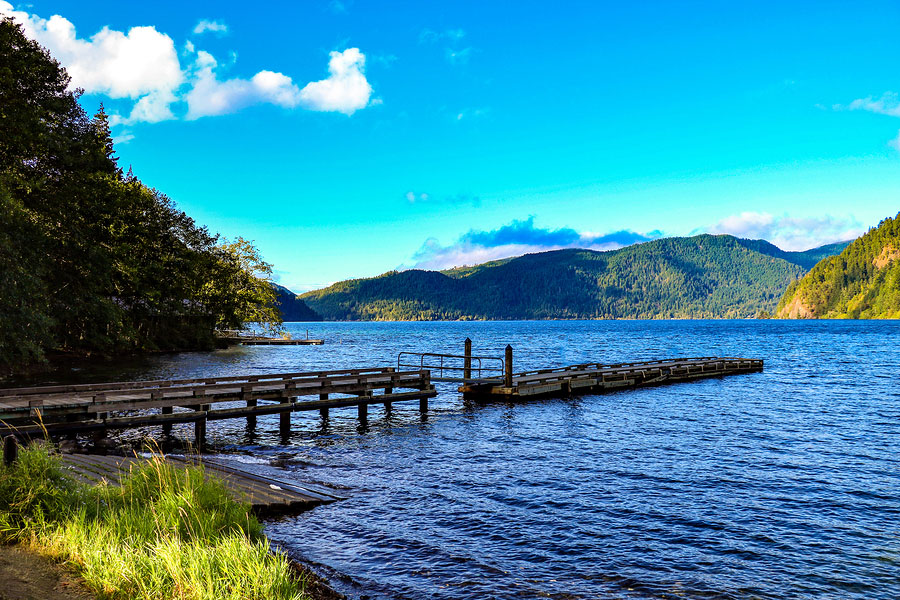
Day 5: Lake Crescent, Waterfalls and Hot Springs
The legend of the well-matched dragons that fought nearly to the death, and whose hot tears of anguish created the hot springs of today lends a magical touch to the Lake Crescent area.
This picturesque glacier-carved lake offers swimming, boating, and fishing along with diverse hiking trails. Hike along a shoreline path that was once a railroad grade, ascend to breathtaking vistas or stroll through the forest to a waterfall. Waterfalls in the area include Marymere Falls, a one-mile walk from Storm King Ranger Station at Barnes Point; Sol Duc Falls, one of the most photographed spots on the Peninsula, is .8 mile walk from the end of Sol Duc Hot Springs Road (13 miles off of Hwy 101 at the west end of Lake Crescent). East of Lake Crescent on the Elwha Road you’ll find Madison Falls on a paved 600 foot accessible path, park near the toll-booth and stroll left to see this cascade.*
Pedal boats, rowboats, canoes, kayaks and motorboat rentals are available seasonally at the resorts and store on the lake. On the north shore of the lake, a 4-mile trail follows the old Spruce Railroad grade and is one of two trails in the Park that allows mountain bikes.
The hot springs resort at Sol Duc features three hot pools and a swimming pool and is open seasonally.**
Take time to enjoy the many soft adventures including whitewater rafting and kayak tours.*
Just east of Lake Crescent, the 13-mile Mt. Muller Loop on US Forest Service Land offers a challenging 2700 foot elevation gain and several vistas, and is open to use by mountain bikes, stock and dogs (US Forest Service).*
*Fees for use in Olympic National Park or Olympic National Forest may apply, for information and a map call (360) 565-3100 or visit the National Park Service or Olympic National Forest, or call (360) 374-7566.
** For brochures, maps mentioned, referrals and/or seasonal information contact the Forks Chamber of Commerce.
